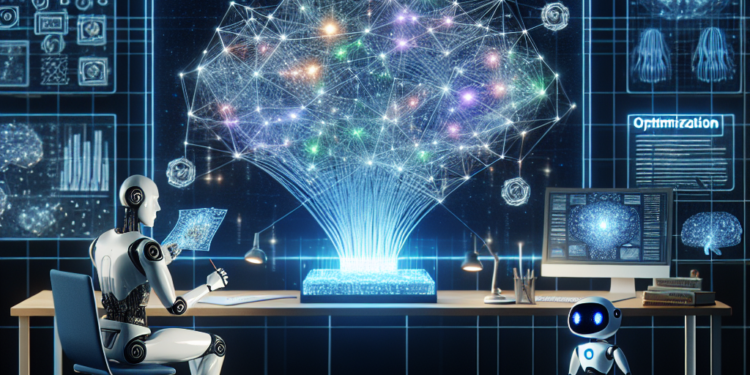Artificial intelligence (AI) has revolutionized the way we live and work, providing us with new ways to solve complex problems and make more informed decisions. AI models are used in a variety of fields, including healthcare, finance, transportation, and entertainment, to name a few. These models are trained using vast amounts of data and algorithms to make predictions and learn from past patterns.
However, as powerful as AI models may be, they are not perfect. They can sometimes make errors or produce inaccurate results, leading to potential risks and consequences. To address this issue, researchers and data scientists are constantly looking for ways to enhance AI models through optimization techniques.
Optimization is the process of fine-tuning a model to improve its performance and accuracy. This can involve adjusting the model’s parameters, hyperparameters, or algorithms, as well as tuning the training process itself. By applying optimization techniques, AI models can be made more robust, efficient, and reliable.
There are several ways in which AI models can be optimized to enhance their performance. One approach is through the use of advanced algorithms and techniques, such as gradient descent, genetic algorithms, and reinforcement learning. These methods can help to fine-tune the model’s parameters and improve its predictive capabilities.
Another way to enhance AI models is through the use of better data preprocessing techniques. Data preprocessing involves cleaning, transforming, and scaling the input data before it is fed into the model. By optimizing the preprocessing steps, researchers can improve the quality of the data and help the model learn more effectively.
Furthermore, researchers can optimize the training process itself by adjusting the learning rate, batch size, and optimization algorithms. By fine-tuning these parameters, data scientists can speed up the training process, reduce overfitting, and improve the model’s overall performance.
One of the key challenges in optimization is finding the right balance between underfitting and overfitting. Underfitting occurs when the model is too simple and unable to capture the complexity of the data, resulting in poor performance. Overfitting, on the other hand, occurs when the model is too complex and memorizes the training data rather than learning from it, leading to high variance and poor generalization.
To overcome these challenges, researchers can use techniques such as regularization, dropout, and early stopping. Regularization helps to prevent overfitting by adding a penalty term to the loss function, encouraging the model to generalize better. Dropout randomly disables a percentage of neurons during training to prevent overfitting, while early stopping stops training when the model starts to overfit on the validation data.
In addition to algorithmic optimization, researchers can also enhance AI models through hardware optimization. By using specialized hardware, such as GPUs, TPUs, or custom-designed chips, researchers can speed up the training process and handle larger datasets more efficiently. This can help to improve the model’s performance and scalability, making it suitable for real-world applications.
Furthermore, researchers can optimize AI models through ensemble learning, which involves combining the predictions of multiple models to make more accurate and robust predictions. By leveraging the diversity of different models, researchers can reduce errors and uncertainties, leading to more reliable results.
Another optimization technique is transfer learning, which involves reusing pre-trained models or features for new tasks. By transferring knowledge from one domain to another, researchers can reduce the amount of labeled data needed for training and improve the model’s performance on new tasks.
Overall, enhancing AI models through optimization is essential for improving their performance, accuracy, and generalization capabilities. By applying advanced algorithms, data preprocessing techniques, and hardware optimizations, researchers can make AI models more reliable and efficient for a wide range of applications.
In conclusion, AI models have the potential to transform industries and improve our lives in many ways. By continuously optimizing and enhancing these models, researchers can unlock their full potential and address the challenges of complexity, scalability, and reliability. As technology continues to advance, the future of AI optimization looks promising, with new techniques and algorithms being developed to push the boundaries of what is possible. With ongoing research and collaboration, we can look forward to even more powerful and effective AI models in the years to come.













